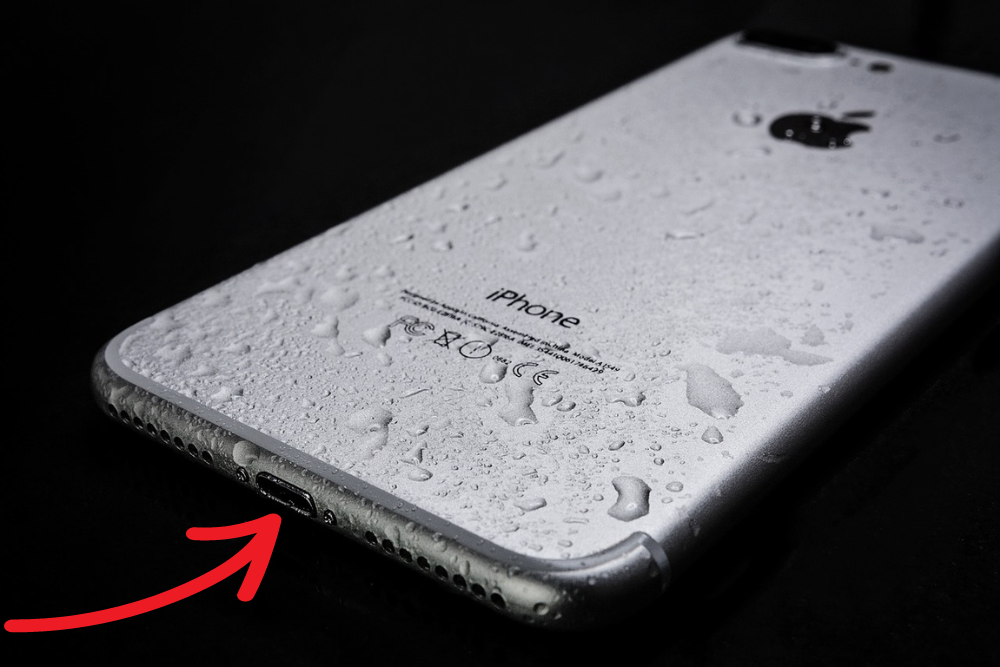
Rechargd.com is reader supported. We may collect a share of sales or other compensation from the links on this page. As an Amazon Associate, we earn from qualifying purchases.
Have you ever dropped your phone in the water and thought that was the end of it? Well, think again! There’s a chance that some water may have made its way into your charging port, but in my experience, these simple methods will dry your device and remove the moisture so it can live another day. So here’s what you do.
How To Remove Water From Charging Port Quickly
Remove water from the charging port with these simple steps: 1) Turn off the device. 2) Dry with a clean towel. 3) Remove the battery (if possible) & the sim card. 4) Tap firmly with your hand to shake the water out. 5) Put your phone into an empty pillow case and blow COOL air onto it for 3 hours.
What Not to Do When Water Gets in Your Charging Port
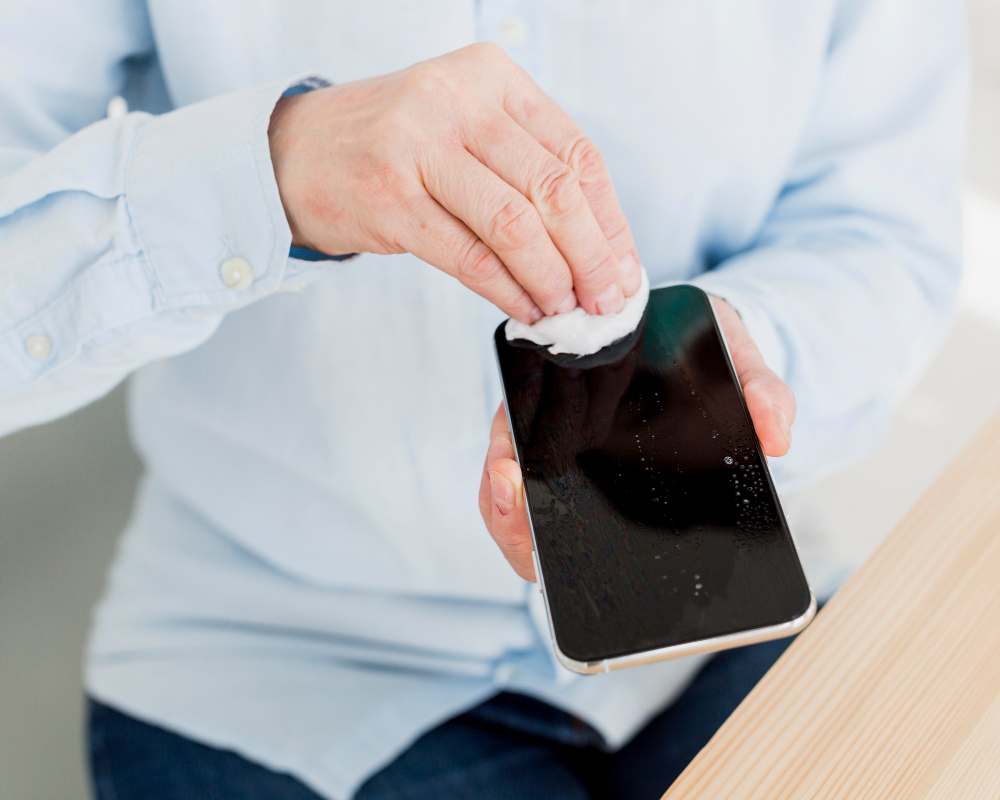
When water gets in your charging port, it can be a real pain.
You want to get your phone back up and running as soon as possible, but there are some things you should definitely avoid doing if you don’t want to make the situation worse.
Don’t Use Hot Air
Don’t use a hair dryer on the hot setting to try and speed up the drying process. The heat from these devices could potentially damage delicate components inside your phone.
Don’t Use Rice
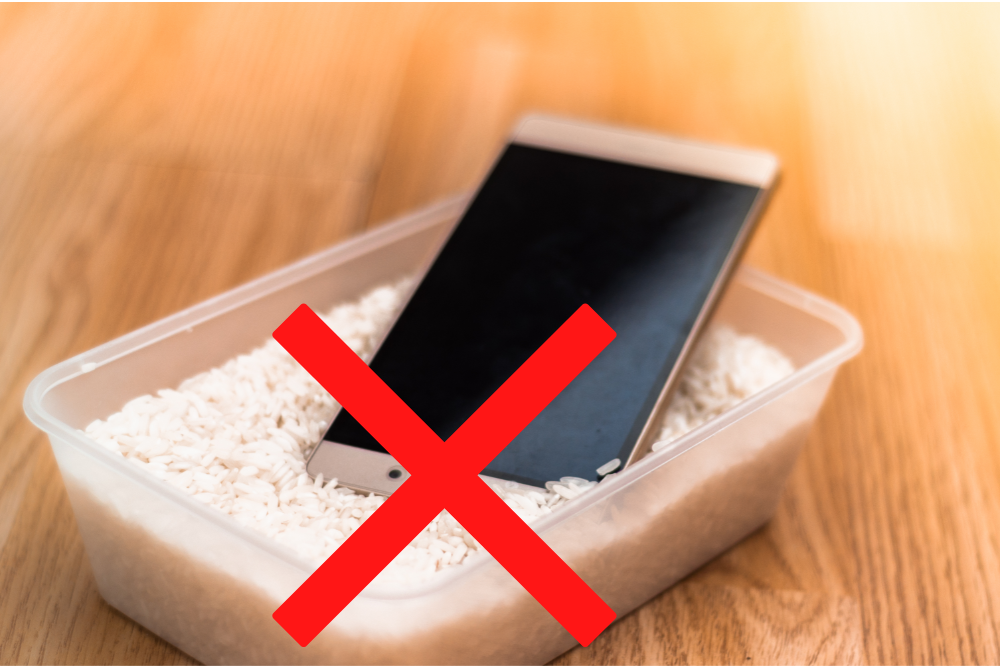
Some people recommend rice to absorb extra moisture, but in my experience, the rice is more likely to clog up the charging port and cause further damage.
My Advice: Don’t put your phone in a bucket of silica crystals or rice either! This method actually takes longer than simply leaving it out to air dry on its own. I know because someone actually tested it.
The following table shows the results of a test in which a phone was submerged in water for 1 hour and then dried using each method. Rice was the second slowest and air drying the quickest!
| Drying Method | Time to Fully Dry |
|---|---|
| Silica crystals | 11 days |
| Rice | 10 days |
| Doing nothing | 8.5 days |
| Cat litter | 7 days |
| Fan | 2 days |
| Air | 3 hours |
Don’t Shake The Device
And whatever you do, don’t shake or tilt the device while it is wet! This will only spread any liquid that may have gotten into other parts of the device, making them more difficult (or even impossible) to clean later on.
The best thing you can do when water gets into your charging port is act quickly. Read on for the exact steps I follow whenever this very occasionally happens.
Safest Way To Remove Water From Your Charging Port

Removing water from your charging port can be tricky, but it’s important if you want to keep your device functioning properly.
Water can get into the charging port when exposed to moisture or liquid spills, in my experience, it’s best to act quickly when this happens.
1. Turn Your Phone Off
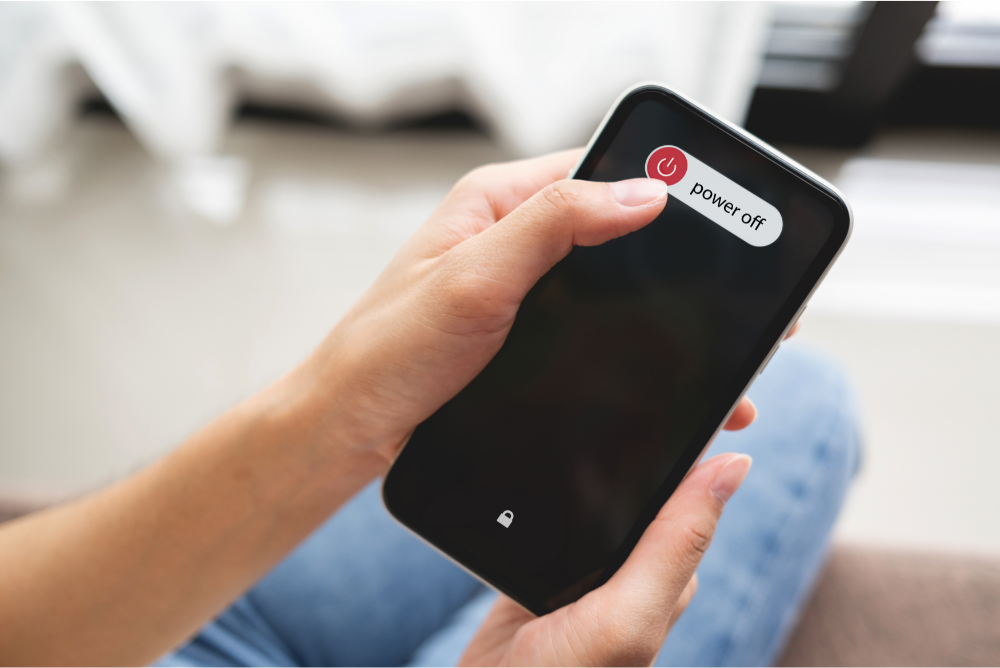
The next step is to turn off your device. This will help prevent further damage from occurring due to an electrical short circuit caused by the water in the port.
2. Towel Dry Your Phone
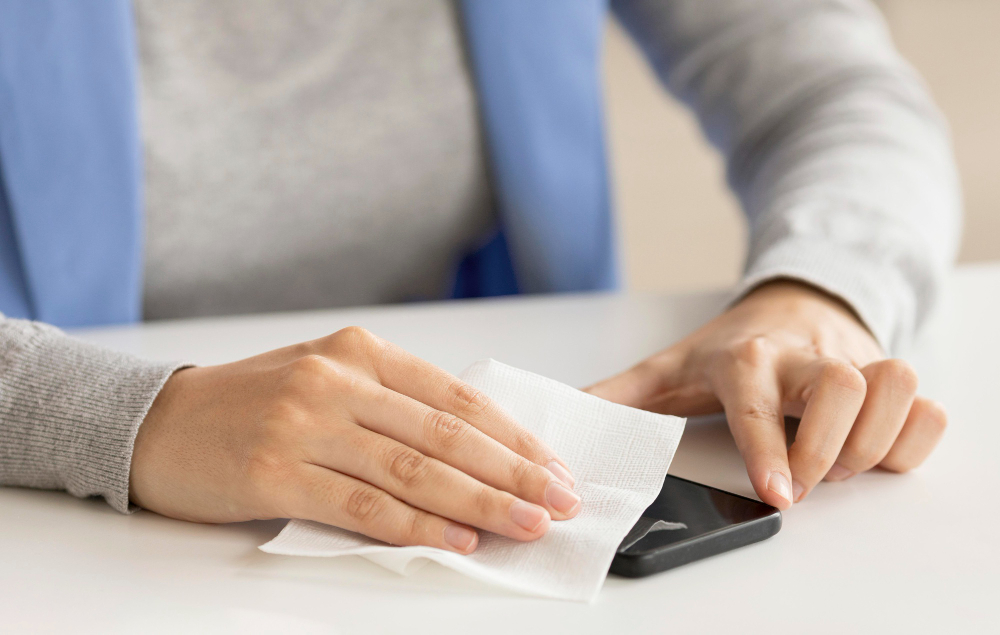
Grab a clean towel and dry your phone, and port as much as you can. This will remove any moisture on the outside and prevent it from accumulating inside the port.
3. Remove Sim Card & Battery (Optional Step)

To avoid further damage, I would recommend removing your battery completely from your device. This is not always possible to do easily, and many newer devices require tools to remove the battery – so in this case, you can leave it as it is.
To be on the safe side, also remove the sim card (if you have the tools at hand to do so – otherwise skip this step).

4. Firmly Tap Your Phone With Your Hand
This step is crucial and makes it much more likely for your phone to dry without causing damage. Gently hit your phone with the open palm of your hand with the charging port facing to the floor.
Tap your phone 10-20 times, so water droplets are shaken out. The tapping & gravity work together, and you’ll likely see some drops come right out.
The key is not to shake or tilt the device but to purposefully tap it while you hold it vertically (with the charging port facing down to the floor)
5. Put Your Phone Into an Empty Pillow Case & Blow Cool Air
Grab an empty pillow case, put your phone inside it, and then, with a portable fan, blow COOL air right into it.
The fan will turn the pillow case into an egg shape and maximize the air current. To stop the pillow from simply blowing away, rest the bottom of the fan onto the pillowcase edge. You can also use tape to make it more stable.
Put the phone inside the pillowcase with your charging port facing in the direction of the fan. You want to set it up, so the airflow is top right on your charging port.
If you don’t have a fan, you can also use a hairdryer (but it MUST be in a cool air setting). A sock also works great too you can even tape the ends to the hairdryer to the sock. Now all you need to do is wait for AT LEAST 3 hours. I hope that worked. Now, let’s look at how water can get into the charging port in the first place.
What if My Phone Only Got a Little Wet
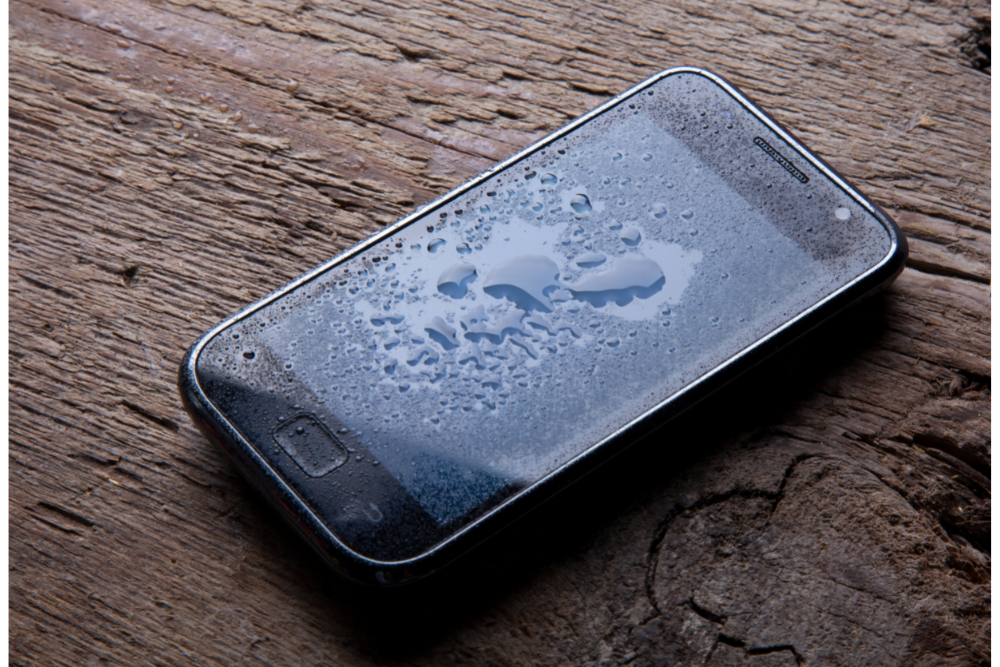
If your phone only got a little wet, you may be able to get away with not having to take any drastic measures. Depending on the amount of moisture that made its way into the charging port, you might still be able to use it without any problems.
However, if there is even a small amount of water in the port, then it’s best to err on the side of caution and take steps to ensure that no further damage occurs.
The best thing you can do is turn it off and leave it as long as possible to dry.
If you really need to use it – one thing you can do is try using a wireless charger instead of plugging in your lightning cable directly into your device. This will help prevent any additional moisture from entering the charging port and potentially causing more damage.
You should also make sure that you turn off your phone before attempting this method as well as unplug all other accessories such as headphones or external speakers, so they don’t interfere with the connection between your phone and charger.
If You See A Liquid-Detection Alert On Your iPhone
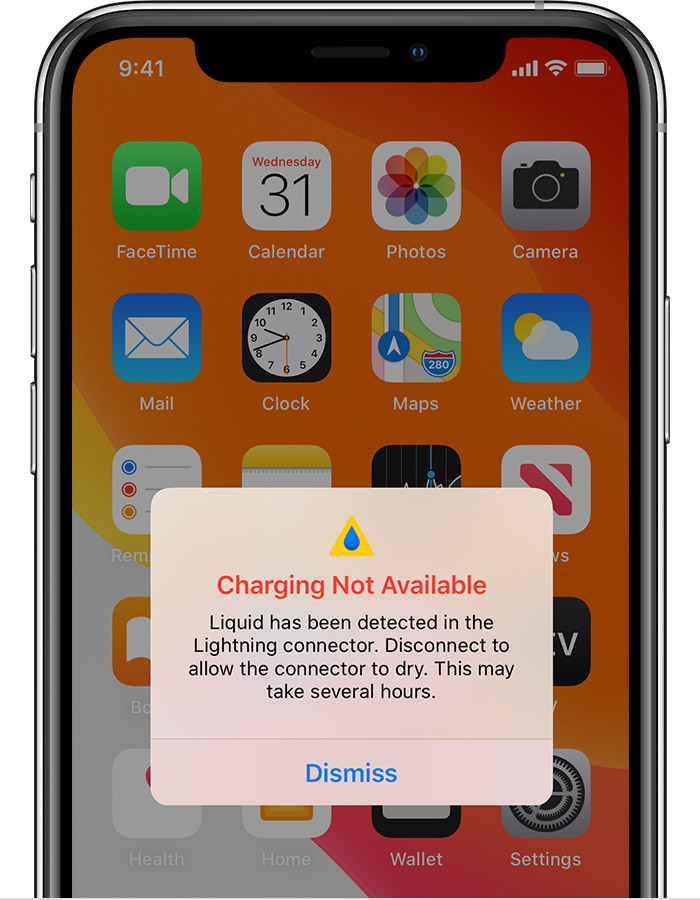
If you see a liquid detection alert on your iPhone, it means that moisture has been detected in the Lightning port.
This could be caused by rain, sweat, or even condensation from your hands. It’s important to take action right away if this happens because charging an iPhone while the Lightning port is wet can cause permanent damage and connectivity issues with accessories.
If you have access to one – use a wireless charger instead (at least until all the moisture has dried).
As these provide much safer options for charging than traditional wired chargers since they don’t require direct contact with exposed metal components like lightning ports do. Just make sure that whatever surface area you’re placing your device on is dry before doing so.
When to Override the Water Detection Alert
When it comes to charging your phone, there are times when you may want to override the liquid detection alert. This is a risky move and should only be done in an emergency situation as it can permanently damage your device.
Before attempting this, make sure that the outside of your phone is completely dry. It’s also worth considering using wireless charging instead of plugging in a cable or accessory.
To override the liquid detection alert, reconnect the charging cable or accessory shortly after it appears onscreen. When the alert pops up again, tap “Emergency Override.”
Keep in mind that doing this will still put your device at risk, so proceed with caution and always consider other options first if possible.
If you do decide to go ahead with overriding the water detection alert, take extra care when handling your device while it’s plugged into power sources such as wall sockets or USB ports on computers and laptops – these outlets can cause electric shocks, which could further damage your phone beyond repair!
It’s important to remember that although you may be able to charge a wet phone by overriding its safety features, doing so isn’t recommended unless absolutely necessary due to how easily things can go wrong – especially if electricity and water are involved!
What If My Phone Detects Water When It’s Dry
If your phone is displaying a liquid detection alert when you’re sure it’s dry, there are a few steps you can take to try and fix the issue. First, grab a flashlight and inspect the charging port for dust or debris that could be obstructing the sensors.
If you find anything, use compressed air to clear it out without damaging any of the metal pins.
If nothing appears to be blocking the port after inspection, then it’s likely that either your phone’s charging port or accessory is damaged. In this case, check if your device is still under warranty so that you can get it repaired or replaced by the manufacturer at no cost.
Another possible cause of false liquid detection alerts may be corrosion on the pins in your phone’s charging port due to exposure to moisture over time.
This often happens with older phones as they’re more prone to damage from water exposure than newer models, which come with better waterproofing technology built-in.
To clean away any corrosion on these pins, use an alcohol swab and gently rub them until all residue has been removed.
It’s also important not to ignore false liquid detection alerts as they could indicate deeper issues, such as faulty wiring inside your device, which could lead to further damage if left unchecked for too long.
So make sure you investigate what might be causing these alerts before continuing normal usage of your device, just in case something else needs attention first!
What if My Phone is Water Resistant
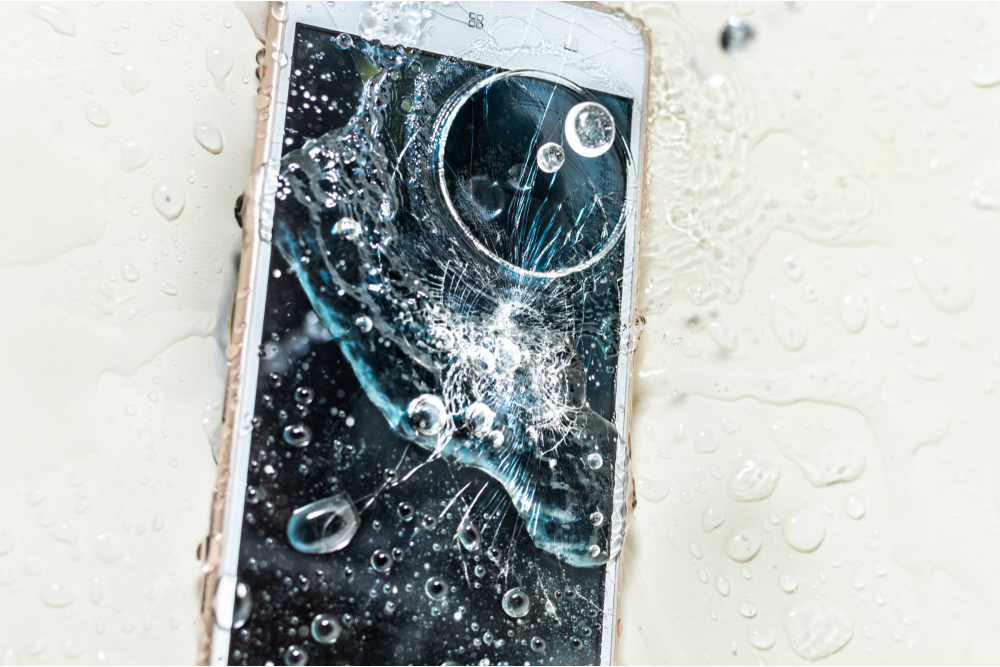
If you have a water-resistant phone, it’s important to remember that it is not waterproof. This means that while the exterior of your phone may be able to withstand some exposure to liquids, the interior components are still vulnerable.
The metal pins and connectors inside your device can corrode if they come into contact with liquid, causing permanent damage.
To prevent this from happening, most phones will automatically disable their charging connector when liquid is detected in order to stop an electrical current from passing through these metal parts.
It’s also worth noting that even if no electricity passes through the metal pins and connectors, there could still be lasting damage caused by any residue left behind by the liquid on these parts.
Finally, keep in mind that even though many phones are now rated IP67 or higher (meaning they can survive being submerged underwater for up 30 minutes at depths of 1 meter), this does not mean you should test out how far down yours can go.
Water-resistance ratings only apply when devices are tested under controlled laboratory conditions so always err on the side of caution when dealing with potential exposure of your device to liquids – better safe than sorry!
How Does Water Get Into the Charging Port?
Water getting into the charging port of your device can be a real problem. It’s important to know how it happens and what you can do to prevent it.
Moisture Exposure
Moisture is one of the most common ways water gets into your device’s charging port.
This could include rain, sweat, or even humidity in the air. If you’re using your phone outside on a rainy day or while exercising, there’s a chance that moisture could get inside the port and cause damage over time.
To avoid this issue, make sure to keep your device dry when not in use and store it away from humid environments like bathrooms or laundry rooms.
Spilled Drinks
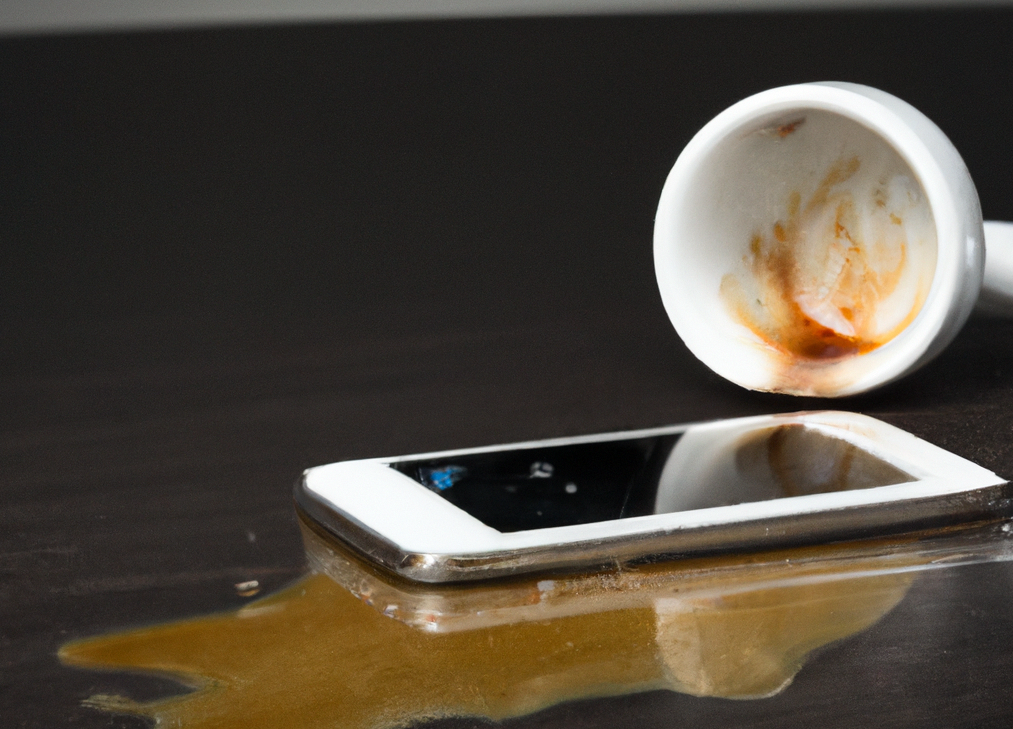
Another way that water can get into the charging port is if you accidentally spill something on your device.
Even small amounts of liquid can seep through cracks and crevices around the port area and cause corrosion or other issues with internal components.
Protective Cases
Using protective cases for phones and tablets is another great way to help prevent water from entering the charging ports, as well as protect against scratches and drops.
Look for cases made with waterproof materials such as silicone which will provide an extra layer of protection against liquids getting inside your devices’ ports while still allowing easy access to cables when needed.
What Are the Risks of Having Water in Your Charging Port?
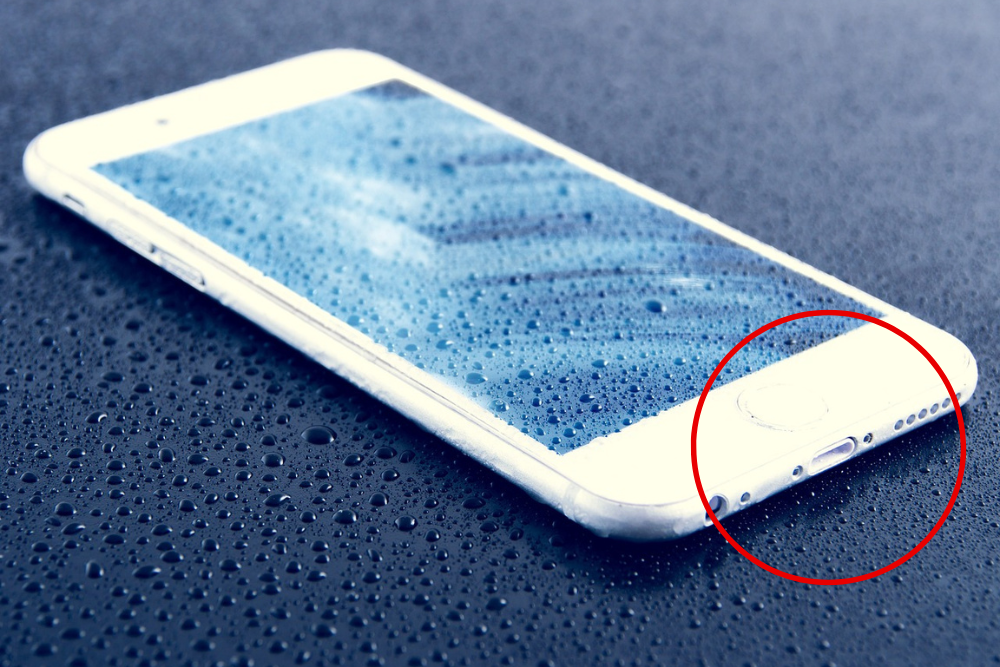
Having water in your charging port can be a serious problem. It can cause corrosion and damage to the internal components of your device, leading to malfunction or even permanent damage.
The risks associated with having water in your charging port are numerous and should not be taken lightly.
The first risk is that it can corrode the metal contacts inside the port, which will prevent any kind of connection between your device and its charger. This means that you won’t be able to charge up or use any other accessories with it until the issue is resolved.
Another risk is that if left unchecked, moisture in the charging port could lead to short circuits due to electrical current flowing through wet areas on circuit boards inside your device. This could result in an unexpected shutdown, complete device failure, or even worse – a fire hazard!
FAQs about Removing Water From Charging Ports
Q: What Exactly Is A Charging Port?
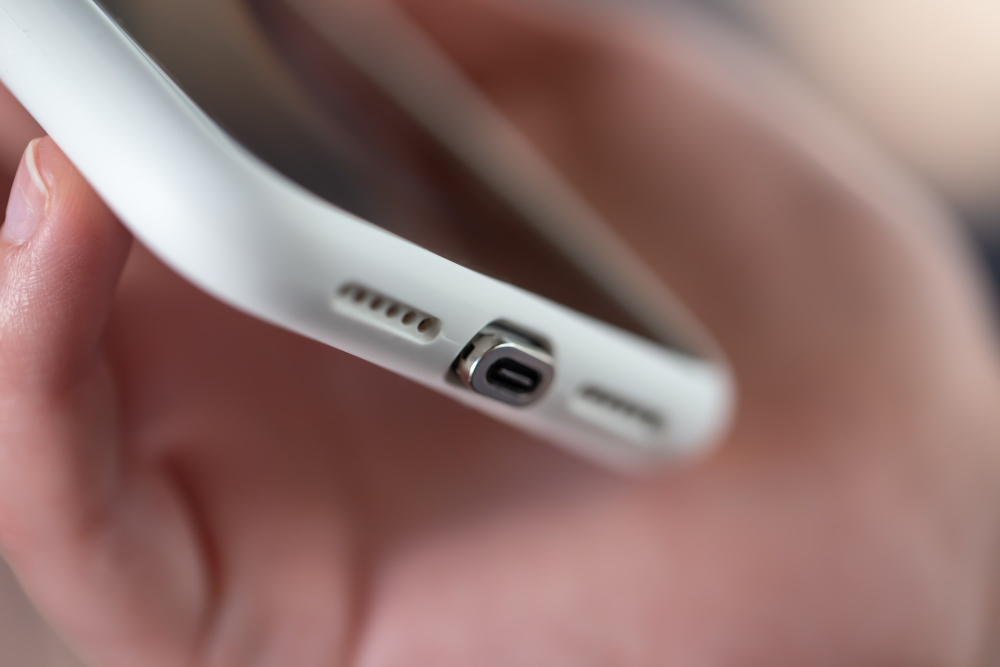
A: A charging port is a small opening on your device that allows you to plug in a charger and charge your device.
It’s typically located near the bottom of the phone or tablet but can vary depending on the model. Charging ports come in many shapes and sizes, from micro USB to USB-C.
Q: How long does water take to get out of the charging port?
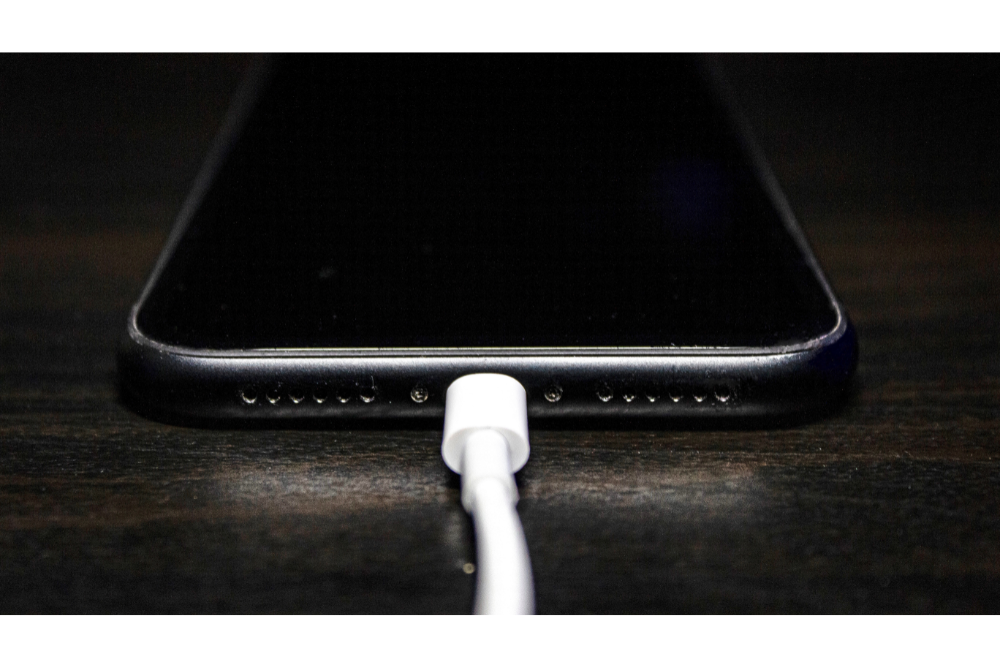
A: Generally, if the port is small, such as those found in smartphones or tablets, then the water should be able to evaporate within a few hours (provided you use the fan method at the top of this article). However, if the port is larger (like those found in laptops), then it may take even longer for all of the water to evaporate.
To ensure that your device stays safe from water damage, it’s best to wait until all moisture has completely evaporated before attempting to charge again.
